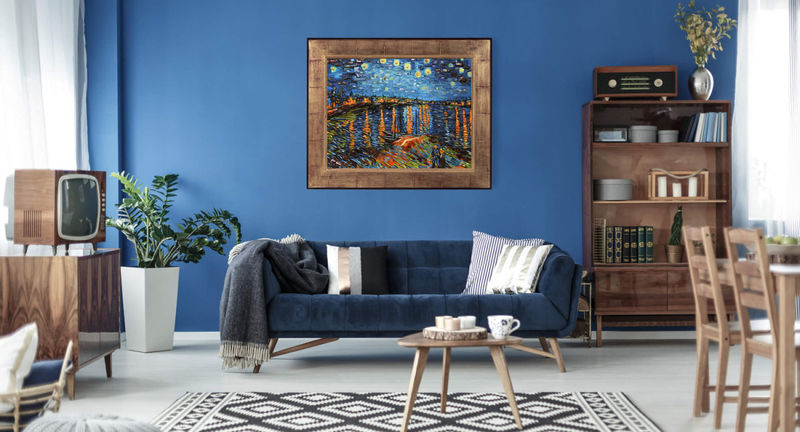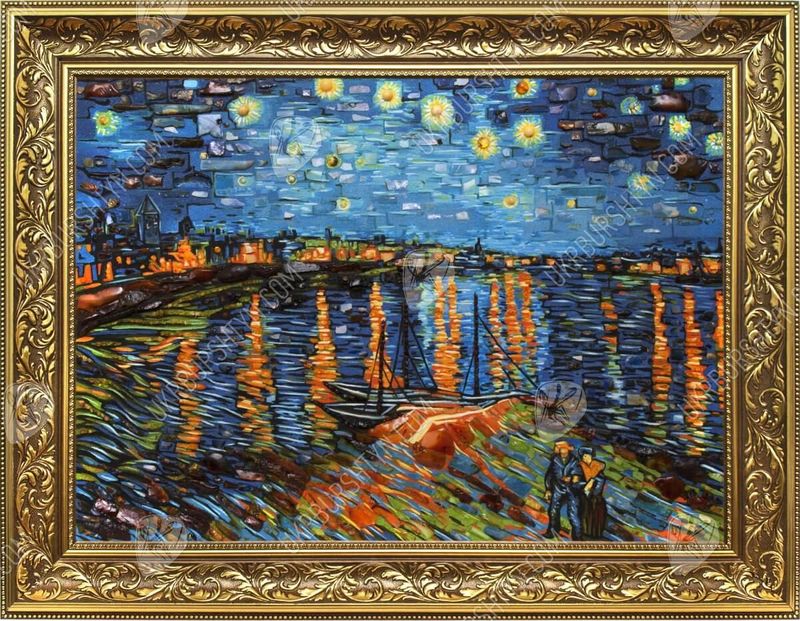Unveiling the Beauty of Nature on Canvas
Living nature has long inspired artists. They immortalized on the canvases views of stormy seas and ancient forests, calm rivers and majestic mountains, blooming meadows and snowy expanses. But not all canvases look as effective, peaceful and attractive as the panel that will be discussed in our article! If you are interested in our articles or have questions for our managers, or if you would like to view the entire range of our services, visit the yantar.ua site and get answers to all your questions.
Starry night over the Rhone: how did the masterpiece appear?
Van Gogh's painting "Starry Night over the Rhone" was created in one of the most fruitful periods of the painter's life. Then he lived in Arles - an ancient city in the south-east of France, finding a rest there from the troubles and worries that haunted the master in Paris. The artist rented a separate mansion - the Yellow House, located on Lamartine Square near the embankment - and every day he went in search of suitable nature for canvases. From February 1888 to May 1889, more than 150 panels, about 100 sketches and watercolors came out from under his brush.
The main goal of Vincent van Gogh was to convey the very essence of this land - hot, fertile, surrounded by the cool Mistral. He actively used yellow paint (since the Renaissance, it was almost not used in artistic works), imitating the sun's rays, which fall on everything around with a shimmering veil. And the night landscapes were illuminated by huge, almost fantastic stars - as the painter himself claimed, their contemplation replaced his religion.
The result of intense work were such masterpieces as "Peach Tree in Bloom", "Red Vineyards in Arles", "Night Cafe Terrace". But even among them, "Starry Night over the Rhone" stands out due to its unique color and manner of performance - broad, free strokes.

Vincent van Gogh sent the first draft of the canvas to his friend Eugene Bosch. This allows us to establish the approximate date of creation of the painting - no later than October 2, 1888. In addition, the master told about the work to his brother Theodorus, and at his insistence in 1889 he exhibited the panel in the Paris Salon of Independent Artists together with another work "Irises". Later, the painting was acquired by the Musée d'Orsay. There, the landscape is preserved to this day.
Van Gogh: interesting facts about the painting
The painter depicted a view of the embankment of the Rhone - one of the largest French rivers. Here, its channel smoothly turns, skirting the rocky ledge on which the city center is built. Bright yellow lanterns shine on the shore - they burn gas lamps, which were a real technical breakthrough at the time. They are reflected in the water, coloring it with golden, bronze, green reflections. The luminaries in the aquamarine sky resonate with them - you can distinguish the bucket of the Big Dipper and the North Star, shining like tiny fireworks. The beautiful scene concludes with a foreground showing two lovers walking along the current and small vessels at a dock.

Like many other famous van Gogh paintings, this canvas was painted en plein air in a single session. This technique is characteristic of the Impressionists and is called "a la prima" - from the Italian "in one sitting". However, later the master redid the initial sketch several times.
The colorful panel is imbued with carefreeness and peace. In it, nature and human creations are inseparably combined, which harmoniously complement each other. Therefore, the work not only fascinates and fascinates, but also makes you think about the surrounding world - the fragile balance in which all its elements are, and the influence of people on this unstable balance.
In our online store, you can buy an amber painting - an original author's work or an exact reproduction of a world masterpiece - and also order an exclusive panel according to your own project!